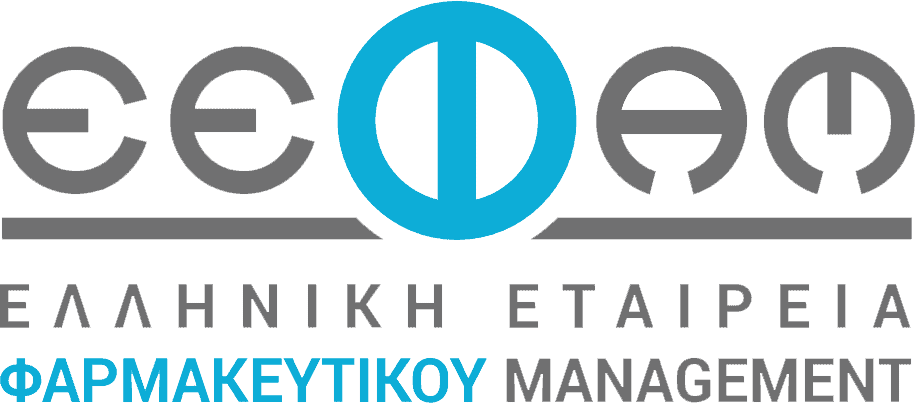Blog
Blog
The top 10 most productive biopharma companies
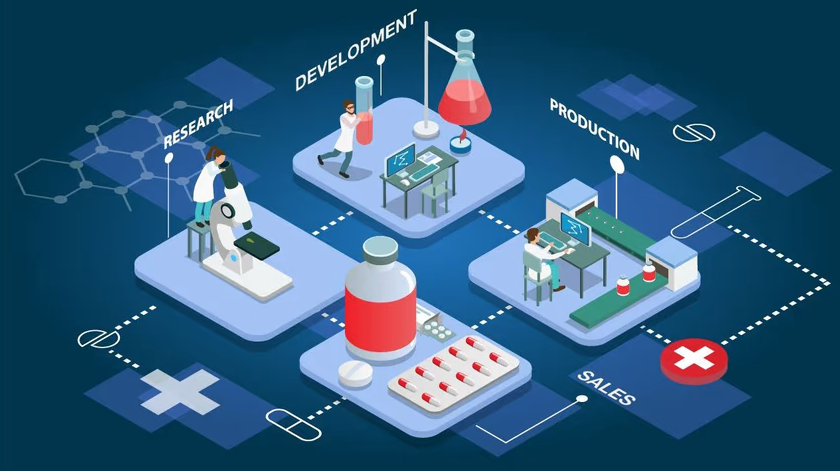
A lot has changed since we last ranked the most productive biopharma companies with numbers from 2016. For starters, two of that year’s top 10 companies—Celgene and Allergan—are no longer independent firms. Their buyers, Bristol Myers Squibb and AbbVie, respectively, have since enjoyed improved productivity as measured by revenue per employee* and have secured spots on both years’ lists.
Then there’s the pandemic. COVID-19 vaccines catapulted BioNTech and Moderna to the top of the list. Because their roughly $20 billion revenues were realized by only around 3,000 employees, the two mRNA experts’ revenue-per-employee ratios came in way ahead of the third company, Gilead Sciences, with 14,400 staffers delivering $27 billion in 2021 revenue.
Speaking of the power of COVID vaccines, it’s worth mentioning that Nasdaq-listed Sinovac Biotech said it reaped a whopping $19.4 billion sales in 2021, mainly from its China-sanctioned COVID shot. With less than 4,300 employees as of year-end 2021, the Chinese vaccine specialist would probably have ranked third on our most productive biopharma roster if it weren’t for a stock trading halt that has been in place since February 2019 because of a messy power grab.
Without the COVID vaccine superstars, Gilead would have reclaimed the No. 1 position. Still, the California biotech’s productivity has plummeted over the past five years. On the one hand, Gilead’s hepatitis C franchise has lost its luster, and Truvada’s loss of exclusivity is hurting Gilead’s base HIV business. On the other hand, through the acquisitions of Kite Pharma and Immunomedics, Gilead has branched out into oncology, which inevitably increased its head count but with relatively limited sales now.
Meanwhile, Gilead collected $5.6 billion sales from COVID drug Veklury in 2021. Similarly, Regeneron counted $6.2 billion sales from COVID antibody combo REGEN-COV alone. Without it, Regeneron wouldn’t have been eligible* for this list, just as it wasn’t back in 2016, when the company only had $4.9 billion in total revenues.
Thanks to a huge windfall from its BioNTech-partnered COVID vaccine, Pfizer nearly doubled its revenue-per-employee ratio in 2021 versus 2016. Eli Lilly, with anti-inflammatory drug Olumiant and several anti-coronavirus antibodies that have been utilized against COVID, also found itself a place on this year’s list.
Three companies don’t have a stake in COVID products—AbbVie, Amgen and Biogen. The latter two Big Biotech shops both saw their productivity decline in 2021 compared with 2016.
Amgen’s portfolio is facing competition from all directions, creating doubts among investors. Biogen is reeling from the Aduhelm debacle in Alzheimer’s disease and the generic attack against its flagship multiple sclerosis franchise. Will we lose two more names when we run this list next? We shall see.
This year’s report once again highlights the advantage of a Big Biotech model, in which a lean organization markets a small number of blockbuster drugs. But as AbbVie knows in the case of Humira, that high productivity linked to a single product can sometimes be a problem for the long-term health of a business.
Overall, our 2021 cohort showed improved productivity results, with nine out of 10 registering over $1 million revenue per employee, compared with just four five years ago.
*Editor’s note: To compile this most productive biopharma list, we divided companies’ 2021 revenues by their total employee numbers as reported in their annual reports or securities filings. To ensure sufficient scale, we only counted drugmakers with at least $10 billion in 2021 revenues and $10 billion in market cap as of August 2022.
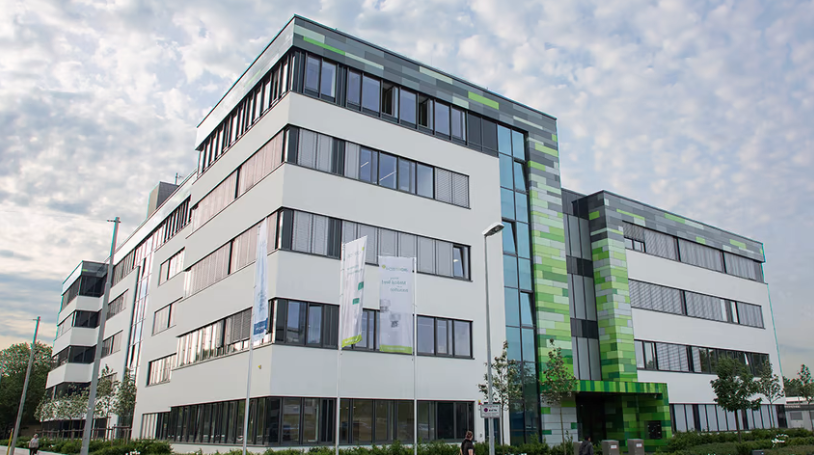
BioNTech’s headquarters Thanks to its lucrative COVID vaccine and relatively small head count, BioNTech landed at the top of the list. (BioNTech)
1. BioNTech
2021 employees: 3,082
2021 revenue: 18.98 billion euros ($22.45 billion)
2021 revenue per employee: $7.28 million
2020 revenue per employee: About $246,000
BioNTech may not have flown solo with its messenger RNA-based COVID shot like its transatlantic rival Moderna did, but that hasn’t blunted the German biotech’s immunotherapy ambitions. And, while BioNTech’s fellowship of the vaccine remains strong thanks to tie-ups with the likes of Regeneron in cancer, the company isn’t letting its own ranks wither as it sets its sights on future mRNA projects plus other ventures like cell therapies.
Staff-ups, manufacturing expansions and ambitious mRNA production projects in places like Africa have emerged at a rapid clip as CEO Uğur Şahin charts his quest to transform BioNTech into a “21st century immunotherapy powerhouse.” That means that alongside its Rolodex of high-profile partners, BioNTech is building its own head count for the future.
The company boasted 3,082 employees globally at the end of 2021—about a thousand more workers than it had in 2020, when BioNTech’s staff numbered 1,941, according to multiple reports.
Cross-referencing those latest employment stats with BioNTech’s 2021 sales of 18.98 billion euros (about $22.45 billion), each worker last year generated some $7.28 million for the company—a far cry from roughly $246,000 in 2020. That $7.28 million figure was the largest for the industry last year.
It’s kept that momentum rolling into 2022 as well. In late January, BioNTech telegraphed plans to hike its head count at its Marburg, Germany, vaccine plant by 50%. Since nabbing the site from Novartis in 2020, BioNTech has added about 200 employees, a company spokesperson told Fierce Pharma earlier this year. Now, it plans to recruit another 250 staffers before the year is out.
The site came equipped with about 300 workers at the time it was purchased.
The Marburg plant already ranks as one of the biggest mRNA vaccine factories in the world, but BioNTech won’t limit itself to COVID at the site, which it’s also infusing with about 50 million euros (about $56.4 million). There, the company also plans to work on other mRNA vaccines once approved, such as the shots it’s developing with Pfizer for flu and shingles plus its solo mRNA vaccine efforts in malaria, tuberculosis and herpes, BNN Bloomberg reported earlier this year.
Early in the pandemic, BioNTech partnered with Pfizer in what has been a massively successful COVID-19 vaccine collaboration. The partners’ shot has generated tens of billions of revenue so far, and the companies are gearing up to help governments with fall booster campaigns.
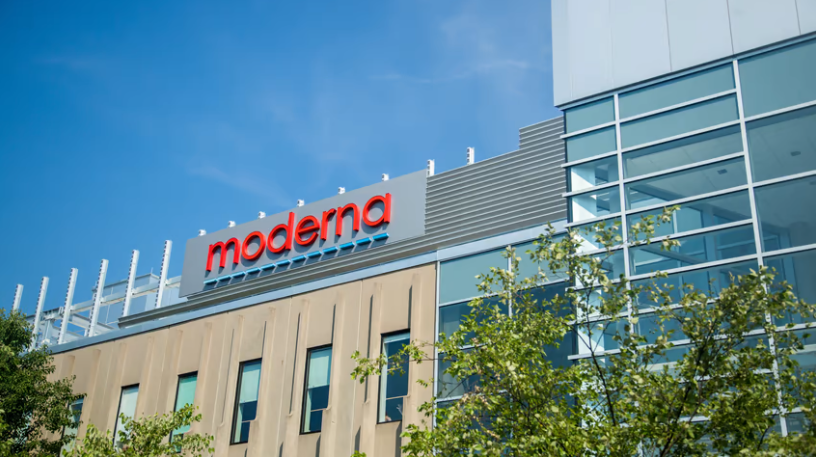
Moderna’s employees brought home a hefty revenue increase for the company thanks to its COVID-19 vaccine. (Moderna)
2. Moderna
2021 employees: 2,700
2021 revenue: $18.47 billion
2021 revenue per employee: $6.84 million
2020 revenue per employee: About $618,000
Moderna aims to build a messenger RNA empire all its own, and it’s hiking head counts and expanding its commercial borders to make it happen.
Unlike German mRNA shop BioNTech, which linked up with the monolithic Pfizer to bring its COVID-19 vaccine to the masses, Moderna charted the path to market by itself. Two years and more than $18 billion later, Moderna’s shot Spikevax has made the company a household name. Meanwhile, Moderna is already plugging those rewards into its next mRNA campaigns against diseases such as influenza and cancer as it builds out an impressive commercial roster around the globe.
Back in 2019, the last year before the COVID-19 pandemic put mRNA on the map, Moderna’s workforce clocked in (PDF) at about 820 people. During 2020, as the company kicked its vaccine ambitions into high gear, Moderna brought that number up to 1,300, then doubled its head count for 2021. By the end of last year, the company’s employee roster stood (PDF) 2,700 strong.
Weighing Moderna’s workforce against its 2021 revenue of $18.47 billion, each employee brought home some $6.84 million for the company—all of that courtesy of the biotech’s mRNA prophylactic Spikevax.
Coronavirus aside, Moderna hasn’t diverged from its bread-and-butter focus on research and development, pitting its mRNA tech against the likes of cancer, flu, respiratory syncytial virus and cytomegalovirus. Still, the company has had its work cut out for it growing itself into a global force on the sales and manufacturing fronts.
Moderna in February planted a flag in Asia, outlining plans to open four new subsidiaries in Hong Kong, Malaysia, Singapore and Taiwan. The company says the move is a bid to grow Moderna’s commercial base in the “integral” sales territory.
Moderna is spreading its wings in Europe, too, after setting up shop in some of the region’s biggest economies in 2021. Next on the bloc’s commercial docket for Moderna are operations in Belgium, Denmark, the Netherlands, Norway, Poland, and Sweden.
The teams will join Moderna’s existing 247 employees in Europe, who run operations from shops in Italy, France, Germany, Spain, the U.K. and Switzerland.
Back on the R&D front, meanwhile, Moderna in December rolled out its so-called AI Academy—a partnership with Carnegie Mellon University—to “deliver Artificial Intelligence capabilities, skills and education to the Moderna workforce,” the company said in its 2021 annual report. The experience is being designed for “all employees,” not just executives, Moderna points out.
“Democratizing AI in this way is an untraditional approach that will help free up our teams to do the work that really matters as we grow,” the company said.
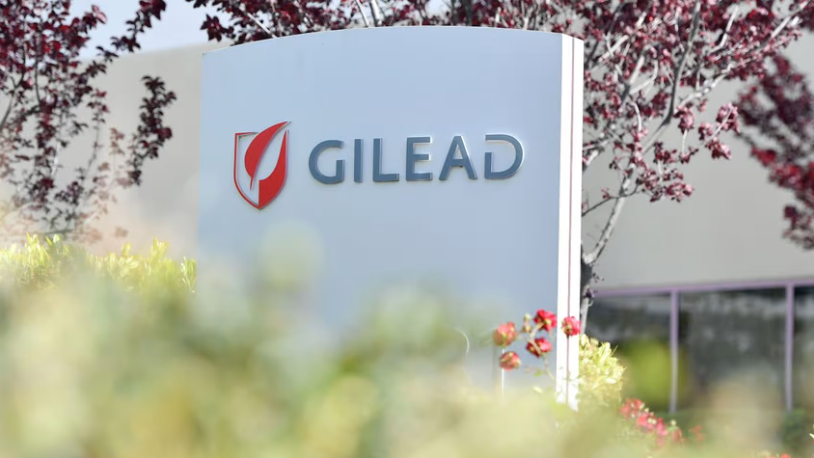
Gilead Sciences’ Velkury faced scrutiny but ultimately increased the company’s revenue. (Josh Edelson/AFP)
3. Gilead Sciences
2021 employees: 14,000
2021 revenue: $27.31 billion
2021 revenue per employee: $1.95 million
2020 revenue per employee: $1.82 million
While Gilead Sciences has weathered changing fortunes over the years, the company is reliably one of the more productive drugmakers in biopharma.
For 2021, Gilead’s fortunes largely centered around the COVID-19 medicine Veklury. The drug generated $5.6 billion last year, a 98% spike from 2020. Thanks in part to the Veklury boost, Gilead’s overall revenues climbed 11% last year to $27.3 billion.
With that revenue performance, and because the company employed just 14,000 people at the end of the year, Gilead’s revenue-per-employee landed at an impressive $1.95 million last year. That was a 7% increase from $1.82 million in 2020.
Veklury’s commercial success has come despite the drug periodically facing scrutiny for ineffectiveness. In September, a study from Europe in The Lancet Infectious Diseases showed the treatment delivered no benefit for patients who required supplemental oxygen.
Elsewhere, the company has its workforce hard at work on oncology products, including breast cancer drug Trodelvy and cell therapies Yescarta and Tecartus. Gilead also has 20 oncology drugs in its pipeline, with 30 clinical trials underway. The oncology emphasis is part of Gilead’s goal to derive a third of its revenue from oncology products by 2030, a far cry from 2021’s oncology revenues that made up less than 7% of its total sales.
As for 2022, the company slimmed its New Jersey workforce in April with 114 layoffs as it prepared to relocate its site in the state to a new, larger corporate office space with no manufacturing, where it will house 500 staffers. At the same time, the company secured 27 acres of undeveloped land near its existing facility in Oceanside, California, to boost manufacturing in the area.
Gilead makes continued efforts to increase diversity in its workforce and has pledged to hire or promote 200 Black Americans without a four-year degree and to increase Hispanic representation to 15% of its U.S. workforce. The company aims to boost female representation in leadership to 39%. Gilead has also been named as a best place to work for LGBTQ+ equality by the Human Rights Campaign Foundation.
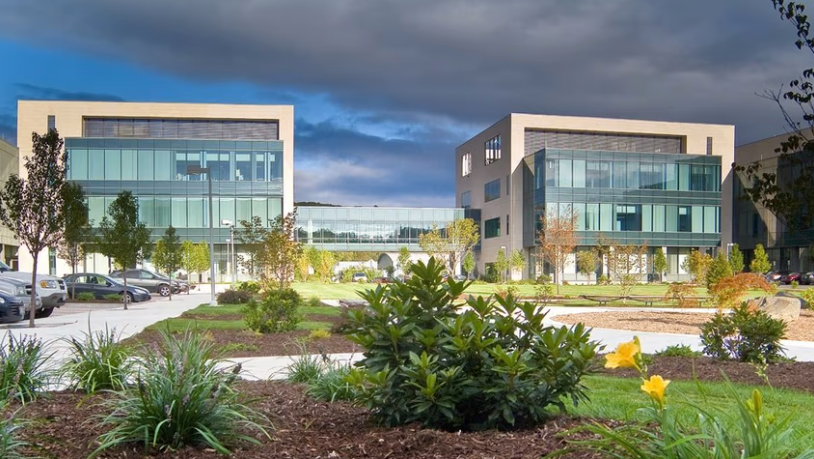
Regeneron’s REGEN-COV aided the company’s 2021 revenue performance. (Regeneron)
4. Regeneron
2021 employees: 10,368
2021 revenue: $16.07 billion
2021 revenue per employee: $1.55 million
2020 revenue per employee: $0.93 million
Before 2021, Regeneron already had one of the most productive workforces in biopharma. Chalk that up to the biotech developing blockbuster drugs Eylea for macular degeneration and Dupixent for eczema and asthma.
When the coronavirus pandemic hit, Regeneron quickly responded with yet another cash cow. The New York-based company developed an antibody treatment, REGEN-COV, as a treatment for high-risk individuals. The therapy was authorized for use in 2020, then in 2021 sales took off as it generated $5.8 billion in the U.S., accounting for a major chunk of Regeneron’s revenue increase from $8.5 billion in 2020 to $16.1 billion in 2021.
Eylea and Dupixent did their part as well. While Eylea’s worldwide sales went from $7.9 billion in 2020 to $9.4 billion last year, Dupixent’s increased from $4 billion in 2020 to $6.2 billion.
The spike in revenue was such that it easily outpaced Regeneron’s increase in operating expenses, which went from $4.9 billion in 2020 to $7.1 billion last year. This figure includes the costs of raw materials, packaging and labor related to the producing or selling of products.
Regeneron has been efficient by staying true to its biotech roots, remaining relatively small and focusing on what it does best—developing novel treatments for a variety of disorders.
While it has successfully commercialized its therapies in the U.S., it leaves those duties outside of the U.S. to the big firms. Outside the U.S., Regeneron partners with Bayer on Eylea and with Roche on REGEN-COV. The company has a global collaboration with Sanofi on Dupixent.
The company added 1,245 positions in 2021, going from 9,123 employees at the end of 2020 to 10,368 at the end of last year. With the company enjoying a boom year, it spent freely on top talent as it added roughly 200 workers with Ph.D. or M.D. designations, it said, bringing Regeneron’s total to more than 1,200.
Breaking down the company’s employee types, it added 592 in industrial operations and product supply, bringing the total in the category to 5,037. It also added 152 staffers in research and preclinical development, bringing the total to 1,936, and 156 in global clinical development, bringing that figure to 1,300.
As for 2022, expect Regeneron’s revenue per employee to return to pre-pandemic levels. REGEN-COV sales have come to a screeching halt as the antibody combo has been shown to be ineffective against the omicron variant.
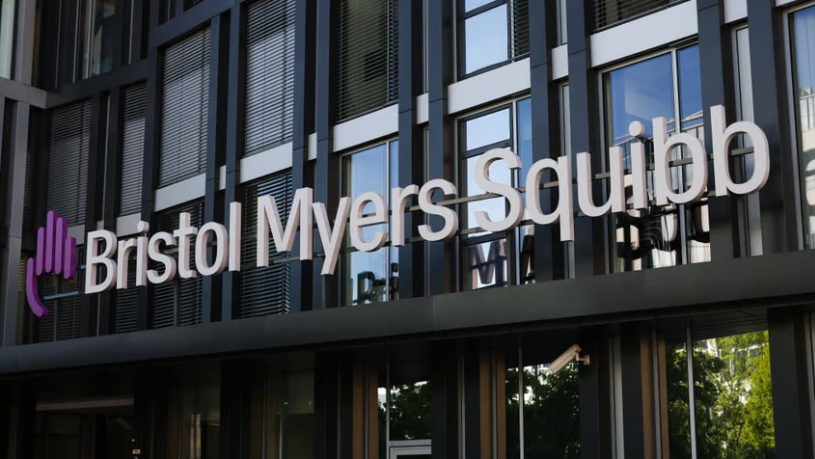
Bristol Myers Squibb’s head count grew last year, along with its revenue. (Photo by Jeremy Moeller/Getty Images)
5. Bristol Myers Squibb
2021 employees: 32,200
2021 revenue: $46.39 billion
2021 revenue per employee: $1.44 million
2020 revenue per employee: $1.41 million
COVID-19 upstarts aside, Bristol Myers Squibb was the most productive among Big Pharma companies last year. With a 2021 revenue-per-employee ratio of $1.44 million, the New York pharma ranks fifth on our list, following BioNTech, Moderna, Gilead Sciences and Regeneron, all of which enjoyed a windfall from selling COVID-19 products.
But BMS’ high efficiency didn’t come as a complete surprise. The company was seventh based on 2016 numbers, and it later acquired Celgene—that year’s No. 2—in a $74 billion megamerger.
Following M&A deals, companies typically squeeze out savings by cutting overlapping functions to realize so-called “cost synergies” while achieving better performance than the sum of each individual. BMS currently expects to save $3 billion annually by 2022 through the integration of Celgene.
Some of BMS’ cost savings are coming from layoffs. BMS tallied 405 job cuts related to the Celgene acquisition in 2021, 1,565 in 2020 and 125 in 2019, according to filings. The deal officially closed November 2019. In 2018, the combined workforce for BMS and Celgene separately was about 32,150 strong, and, by the end of 2019, the post-merger BMS counted about 30,000 employees. Some staffers supporting Otezla likely didn’t join the combined firm after Amgen bought the blockbuster psoriasis drug for $13.4 billion.
Last year, BMS’ total head count rose about 6.4% to 32,200, with about 58% located in the U.S. At the same time, the company’s revenue climbed 9.1% year over year to $46.39 billion, thanks to growth from all three of its top-selling meds: Revlimid, Eliquis and Opdivo.
Amid the revenue growth, BMS recently wound down some of its manufacturing footprint. Last year, it sold a capsule and tablet production plant in Switzerland to WuXi AppTec’s WuXi STA.
Meanwhile, with back-to-back FDA approvals of CAR-T therapies Breyanzi and Abecma in 2021, BMS has been expanding its cell therapy production capabilities.
In November, BMS officially opened a new cell therapy facility at its Devens, Massachusetts, campus with 150 new employees on board plus a plan to eventually add “several hundred” jobs. It’s also building a new facility in Leiden, Netherlands, which is expected to be operational at the end of 2024 and house “several hundred” new positions.
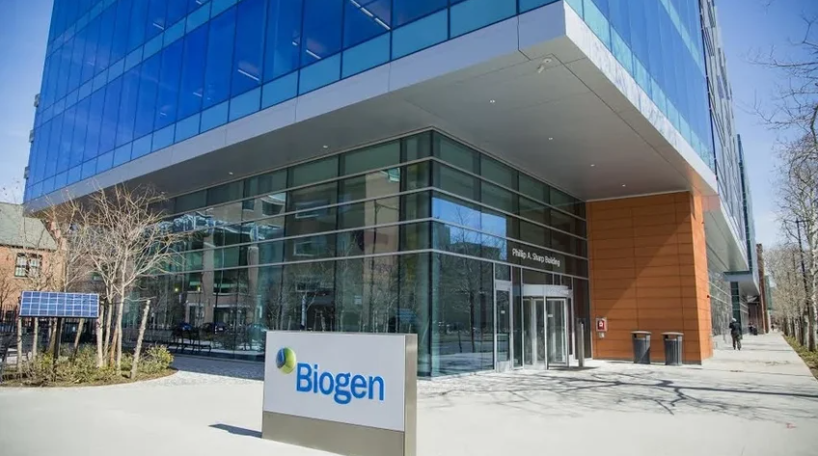
Biogen started disbanding its Alzheimer’s disease marketing team in March, and revenue is expected to decline year over year. (Biogen)
6. Biogen
2021 employees: 9,610
2021 revenue: $10.98 billion
2021 revenue per employee: $1.14 million
2020 revenue per employee: $1.48 million
As Massachusetts-based Biogen hired more people last year, its revenues declined. That’s not a winning recipe to rise in the productivity rankings.
Still, as a relatively small drugmaker with several successful franchises, it finds itself among the top 10 most productive companies industrywide.
Biogen’s productivity dropped 23% in 2021 to a revenue-per-employee ratio of $1.14 million. In our previous list based on 2016 data, Biogen ranked third with $1.55 million revenue per employee and a total head count of 7,400.
As of the end of 2021, Biogen counted 9,610 employees, 6% more than the 9,100 it had at the end of 2020.
At the same time, Biogen’s revenue decreased 18% year over year to $10.98 billion in 2021. Biogen’s sales of Tecfidera fell by nearly half to $1.95 billion as a generic entry in the U.S. took a toll on Biogen’s once top-selling drug. Spinal muscular atrophy drug Spinraza, previously Biogen’s second best-selling product, also experienced a sales decline last year thanks to competition from Novartis and Roche.
On the flip side, Biogen did build a brand-new Alzheimer’s disease marketing team for Aduhelm. But controversy around the drug’s approval, questions over its benefit-risk profile and a daunting price tag significantly limited its uptake. After an accelerated approval in June 2021, the medicine pulled in $3 million sales last year.
Looking forward, a restrictive Medicare coverage policy spells a similar—if not worse—performance for years to come. After that slapdown, Biogen recently decided a makeover was due.
The company started disbanding the Alzheimer’s sales force in March, leaving only “minimal resources” to handle Aduhelm’s patient access programs. Some R&D positions may get eliminated as well as Biogen re-prioritizes its R&D activities, including choosing to “accelerate, terminate, divest or partner certain programs.”
The layoff round was part of a bigger plan to save $1 billion in annual costs. The exact number of job cuts was unknown, but Stat reported in December that Biogen was looking to cut more than 1,000 positions.
Meanwhile, Biogen is investing outside the U.S. In its business overhaul plan, Biogen highlighted international growth opportunities, especially in China and certain countries in Latin America and the Middle East.
Without any meaningful contribution from the Alzheimer’s sector, Biogen expects 2022 revenues to continue to decline to between $9.9 billion and $10.1 billion.
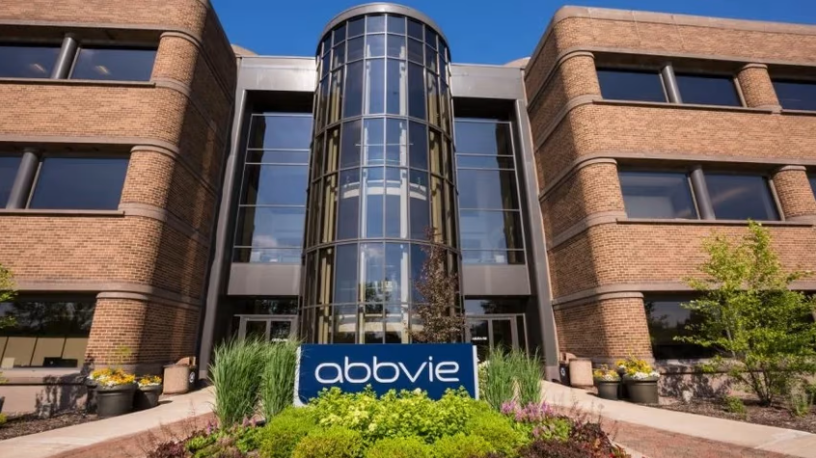
In its annual proxy filing, AbbVie said its annual median compensation last year was $149,662. (AbbVie)
7. AbbVie
2021 employees: 50,000
2021 revenue: $56.2 billion
2021 revenue per employee: $1.12 million
2020 revenue per employee: $970,000
While many drugmakers in this report employ small workforces by Big Pharma standards, AbbVie’s total head count falls only behind COVID behemoth Pfizer in these productivity rankings. In all, the Illinois-based company employed about 50,000 people as of the end of January, a slight uptick from the 47,000 it had as of January 2021.
But because of AbbVie’s impressive revenue haul—courtesy of megablockbuster Humira and a suite of other big-selling medicines—the company finds itself among the most productive drugmakers in 2021.
A global pharma powerhouse, AbbVie pulled in $56.2 billion last year, a 22% increase from 2020. While many of the company’s peers delivered sizable revenue gains thanks to COVID-19 products last year, AbbVie’s growth came from its core products. The sales haul ranked fourth among large drugmakers last year.
No summary of AbbVie’s financial performance is complete without a heavy emphasis on heavyweight Humira. Last year, the immunology drug pulled in $20.7 billion, or 37% of AbbVie’s total haul.
But with Humira set to come under intense biosimilar pressure in 2023, it remains to be seen how AbbVie’s financial position will hold up over time. Amgen is set to inaugurate the Humira biosimilar market in January 2023, and a handful of other players are planning staggered launches throughout next year.
AbbVie has spent years preparing for Humira competition, including by buying Allergan for $63 billion in 2019. Botox, a key asset in that purchase, pulled in $4.68 billion between its therapeutic and aesthetic uses last year, a whopping 87% leap from 2020.
Elsewhere in AbbVie’s portfolio, revenues for cancer drug Imbruvica grew 2% to $5.4 billion, while immunology newcomers Skyrizi and Rinvoq delivered sizable increases to pull down $4.59 billion in combined sales. AbbVie projects the pair of immunology meds will reach $15 billion in combined sales by 2025.
On the cost side of the business, AbbVie acknowledges that “attracting and developing high-performing talent is essential” to its success. In an annual Securities and Exchange Commission filing, the company said it invests in “competitive compensation and benefits programs.” The company embraces flexible work practices and finds other ways to assist its employees when needed, the filing says.
In its annual proxy filing, AbbVie said its annual median compensation last year was $149,662. Since CEO Richard Gonzalez nabbed a total compensation package worth more than $23.9 million, the company’s CEO-to-worker pay ratio was 160 to 1.
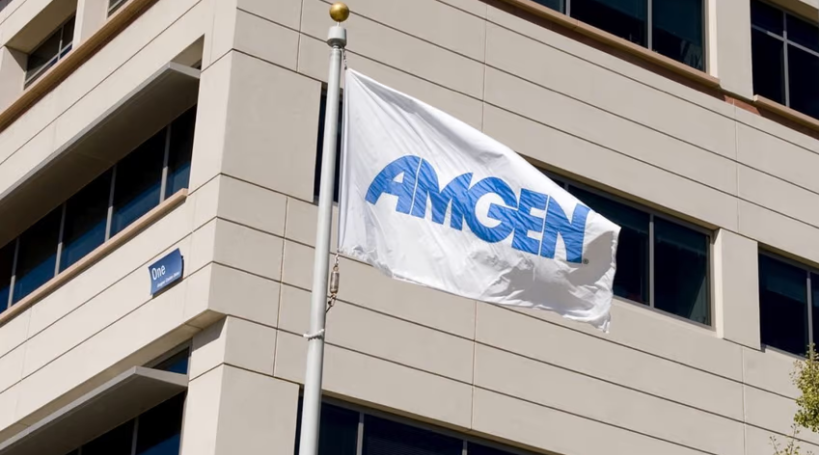
In its manufacturing operation, Amgen plans to deploy “cobots,” or collaborative robots, that will work alongside employees. (Amgen)
8. Amgen
2021 employees: 24,200
2021 revenue: $25.98 billion
2021 revenue per employee: $1.07 million
2020 revenue per employee: $1.05 million
Despite Amgen missing its 2021 revenue goal, the company has been busy lately with a cancer launch, layoffs, manufacturing investments and more.
All told, last year Amgen generated nearly $26 billion. Since it employed around 24,200 people at the end of the year, its revenue-per-employee figure landed at $1.07 million, beating out most of the industry on that metric.
Even as Amgen works to make the most of its Otezla acquisition and grow its cancer launch Lumakras, the company only added about 100 staffers last year, an annual filing showed.
Meanwhile, Amgen’s U.S. sales team took a big hit last February as the company shrunk its workforce by approximately 500 jobs. In doing so, the company said it was increasingly turning to pandemic-era digital marketing tools rather than an overwhelming emphasis on in-person meetings.
“We made these changes to better enable Amgen to make additional investments we believe are needed to take advantage of patient-focused opportunities, including launching new products, and investing in R&D,” the company said in an emailed statement at the time.
But it wasn’t all about cost cutting for Amgen last year. The company in June 2021 dropped $365 million on a smart facility in New Albany, Ohio. The 270,000-square-foot plant will employ 400 people by the time it comes online in 2024, the company’s senior vice president of manufacturing said in an email to Fierce Pharma at the time. The site, which aims to be Amgen’s “most digitally advanced facility,” was a move for the company to get ahead of an anticipated growth in demand for its products. Employees will work alongside “cobots,” or collaborative robots, which will do work as opposed to human employees.
Two months later, the company pledged $550 million for a manufacturing site in North Carolina.
All of this comes amid Amgen efforts to grow revenues and profits with its new offerings, including its planned Humira biosimilar launch in January. In addition, last year Amgen won FDA approval for Lumakras as the first treatment for non-small cell lung cancer with a KRAS G12C genetic mutation. The approval marked a huge win as the mutation was once considered an undruggable target.
In December, Amgen’s Otezla nabbed a label expansion for patients with plaque psoriasis who are candidates for phototherapy or systemic therapy.
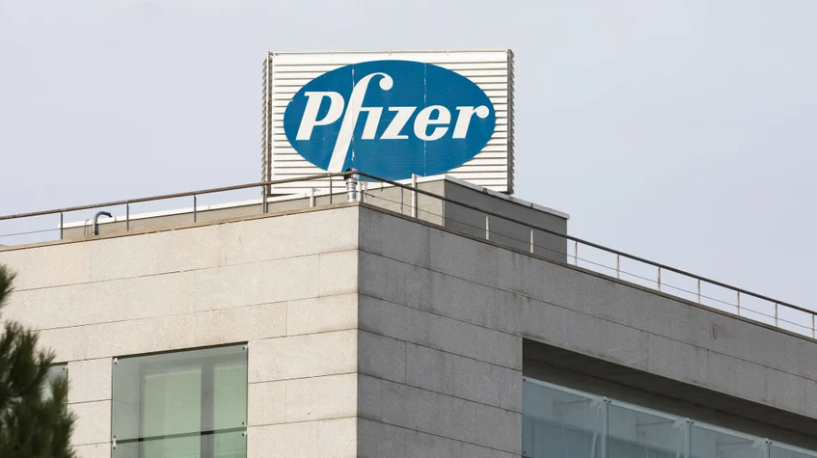
With about 79,000 employees worldwide at the end of last year, Pfizer is the largest company on this report. (Photo by David Benito/Getty Images)
9. Pfizer
2021 employees: 79,000
2021 revenue: $81.29 billion
2021 revenue per employee: $1.03 million
2020 revenue per employee: $0.54 million
During the pandemic, Pfizer has pulled off a remarkable feat, trimming its employee count by nearly 10,000 while increasing its revenue by close to 100%.
It’s not hard to figure out how the New York pharma accomplished this. Sparked largely by sales of its BioNTech-partnered COVID-19 vaccine Comirnaty, Pfizer increased (PDF) its revenue from $40.9 billion in 2019 to $81.3 billion in 2021.
Over this same period, Pfizer reduced its head count from 88,300 to 79,000 employees, largely attributed to the company shedding generics unit Upjohn in the fourth quarter of 2020. According to a Securities and Exchange Commission (SEC) filing, in September of 2019, Upjohn had 2,377 employees.
Even in nearly doubling its revenue, Pfizer kept its employee count in check, finishing 2021 with only about 500 more employees than it started the year with.
For a Big Pharma as focused on growth as Pfizer is, it has been expert at preventing bloat. In 2009, when the company pulled off a $68 billion megamerger with Wyeth, it combined firms that had ended 2008 with 81,800 and 47,426 employees, respectively. A year later, Pfizer had pared their combined head count by nearly 10% to 116,500. By the end of 2013, the company had reduced its payroll to 77,700.
In addition to layoffs, divestitures have helped keep Pfizer’s employee count relatively constant as the company has exchanged more promising enterprises gained through M&A for those with less upside.
When Pfizer picked up injectables player Hospira in 2015, it swelled the company’s employee ranks to 97,900. But divestitures—most critically the Upjohn sell-off—have gotten Pfizer back to a more manageable payroll.
Pfizer still is the biggest company, by far, on 2021’s top 10 list of most productive biopharmas. The next largest is AbbVie, with 50,000 employees, followed by Eli Lilly at 35,000.
As for last year, while Pfizer’s revenue increased by nearly $40 billion, its cost of sales swelled from $8.7 billion to $30.8 billion and its R&D expenses rose from $9.4 billion to $13.8 billion. But these increases had little to do with increased manpower, the company said in its SEC 10-K report.
The cost of sales mushroomed because of the “impact of Comirnaty, which includes a charge of the 50% gross profit split with BioNTech and applicable royalty expenses,” Pfizer wrote.
As for 2022, expect Pfizer’s revenue per employee to increase significantly. The company has reported (PDF) $54.3 billion in revenue in the first half of this year, with Comirnaty and oral COVID-19 antiviral Paxlovid combining for more than $31 billion in sales.
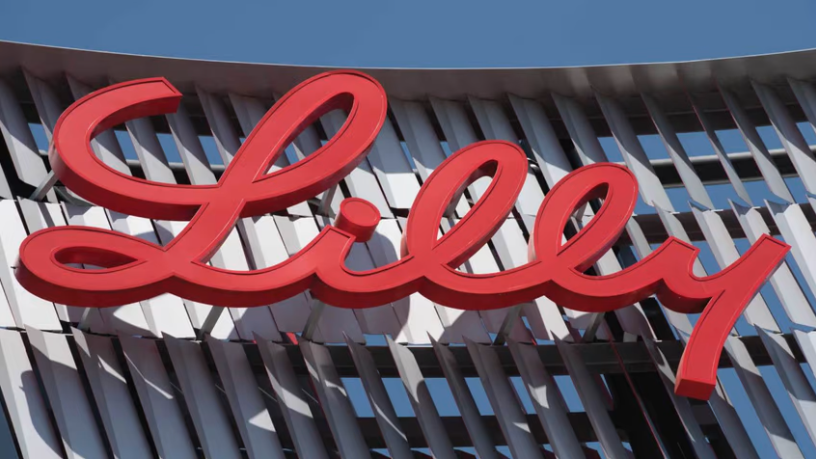
Eli Lilly’s head count is larger than all the other companies in this report, besides AbbVie and Pfizer. (Eli Lilly)
10. Eli Lilly
2021 employees: 35,000
2021 revenue: $28.32 billion
2021 revenue per employee: $810,000
2020 revenue per employee: $701,000
Over the last several years, Eli Lilly has been working hard to update its portfolio of marketed drugs by replacing sales derived from aging medicines with those from new launches. Its efforts are paying off, and, now, the pharma giant has worked its way onto a list containing many smaller drugmakers.
With 35,000 employees at the end of 2021, Eli Lilly is larger than all the other companies in this report other than Pfizer and AbbVie. Plus, with $28.3 billion in global sales last year, Eli Lilly ranked No. 12 among all biopharma players on that metric.
The company has undergone quite a change in the last several years. Shortly after CEO David Ricks took the helm back in early 2017, the company kicked off a large cost-cutting effort aimed at saving $1.2 billion annually. That cost-cutting campaign involved reducing Eli Lilly’s head count by around 3,500 people, many of whom were offered “enhanced retirement benefits.”
At the end of 2016, Eli Lilly employed nearly 42,000 people. With its latest head count being around 35,000 people, the company has actually trimmed about 7,000 employees from its ranks over the years.
Meanwhile, Lilly’s revenue has grown over that span, boosting its per-employee productivity stats significantly. In 2016, the company’s revenue per employee was around $505,000.
Over the years, the company has been doubling down on new drug launches. Back in 2016, Lilly was relying on older pharmaceutical products for 86% of its sales, Evaluate Vantage reported at the time.
These days, it’s quite a different story. During the second quarter, Lilly reported that its newly launched products represented 67% of its overall sales, excluding its COVID-19 antibody revenues. Lilly’s new launches include Type 2 diabetes drug Trulicity, breast cancer med Verzenio, immunology blockbuster Taltz, migraine prevention med Emgality and more.
COVID-19 antibodies also played a big role for the drugmaker last year. The Indiana-based company was one of the few in the industry that managed to quickly advance antibodies to help fight the pandemic, and it collected $2.24 billion in sales from the products last year. That represented about 8% of the company’s overall haul, also contributing to the productivity performance.
Πηγή: fiercepharma.comΚατηγορίες
Δημοφιλή Άρθρα
Πρόσφατα Άρθρα
Δεν είστε εγγεγραμμένο μέλος της Ε.Ε.Φα.Μ;
Εγγραφείτε τώρα